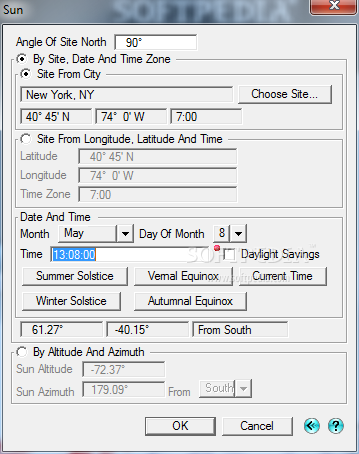

Trim, Split, and Stitch operations are Boolean-like operations that can be applied to surface meshed objects as well as to solids, to cut away a piece, to separate an object into two or more parts, or to connect objects together.īoth 2D and 3D sections of solid objects can be derived using either a cutting plane or a cutting line. They can be used to compose primitive shapes into arbitrarily complex forms.

Metaformzª allow you to organically blend a variety of 3D forms and, as implemented in form
Form z renderzone free#
After their initial creation, these surfaces can be freely edited to interactively change their shape.Ĭoons and bicubic Bezier patches are parametric curve-bounded surfaces, generated in different ways, that can be smoothly combined to produce a variety of challenging free forms. The NURBS based surfaces are called nurbz in form

Parametric smooth surfaces can be generated from previously drawn control lines using one of a complete set of mathematical methods that include NURBS, B-splines, and Bezier curves. All these splines are parametric and can be edited to change their shape. Draft angles can also be applied to surfaces of solids, to facilitate molding operations.Ī variety of smoothly curved splines, including NURBS lines, can be drawn directly or can be generated from previously drawn vector lines. Surfaces can also be smoothly blended or fillets can be applied to their lines of intersection. It ca be applied to vertices, edges, or both vertices and edges, including concave vertices and sequences of edges called stitches. By increasing the resolution of the surface of an object, while optionally curving it, offers extensive form generation possibilities.Īdvanced rounding can be applied to both facetted and smooth parametric objects. Image based displacements can be used to imprint a shape on both flat and already meshed surfaces.īoth quadratic and triangular subdivisions (called q-subz and t-subz, respectively) are available. Also, deformation operations can be applied to bend and twist meshed objects. The meshes can be moved symmetrically according to a predefined profile, or they can be disturbed randomly or according to a mathematical formula, such as a wave. Objects can be meshed at any level of resolution either in the direction of a selected edge or in another preset direction. The four available types, mesh, triangulated mesh, stepped, and triangulated contour models, can be freely combined to model rivers, roads, flat areas, and a variety of other topographies. Terrain models can be generated as true 3D solids, trimmed to the shape of a site, from 2D contour lines. A special type of spherical objects, metaballs, can also be generated and blended to form highly organic shapes.ĭerivative objects that can be generated from other objects include 2D shapes, 3D extrusions, walls, parallel objects, projection objects, unfolded objects, revolved objects, helixes, screws and bolts, stairs, sweeps, skins, and lofts. Spherical objects, that include the complete set of Platonic solids, soccer balls, and lathed and geodesic spheres, can be generated both interactively and through numeric input, and can also be scaled and stretched. These can be extruded in a direction perpendicular to their plane, or to a point. Also dynamically generated 3D solids and 2D shapes include rectangles, n-sided polygons, patterned polygons, circles, ellipses, arcs, free hand line drawings, a variety of splines, and double (“wall”) lines.
Form z renderzone full#
Highly interactive graphic interface with associated multiple windows, tear off tool palettes, virtually unlimited and selectively applied Undo/Redo operations, customizable key shortcuts for all the operations, simultaneously available prepick and postpick modes, and integrated 2D/3D operations allow you to work in either 2D or directly in 3D space.Ī full set of primitives can be generated through graphic or numeric input. Z is highly responsive to the needs of mature designers and, at the same time, novices can use it with ease.It is an effective design tool for architects, landscape architects, urban designers, engineers, animators and illustrators, industrial and interior designers, and all design fields that deal with the articulation of 3D spaces and forms. Z is an award winning general purpose solid and surface modeler with an extensive set of 2D/3D form manipulating and sculpting capabilities, many of which are unique.


 0 kommentar(er)
0 kommentar(er)
